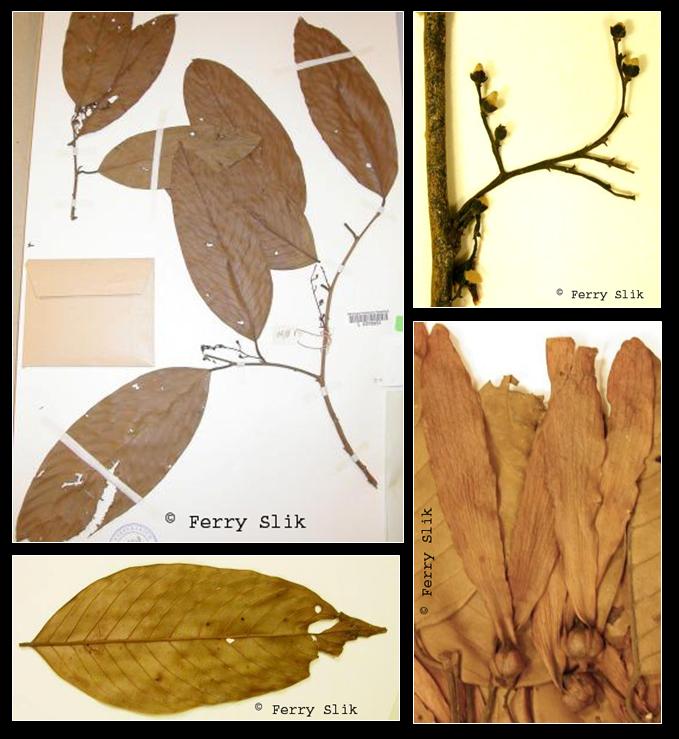Hopea nervosa King, J. R. As. Soc. Beng. Sc. 62, 2 (1893)
Latin for 'conspicuously veined'.Diagnostics
Upper canopy tree up to 45 m tall and 75 cm dbh. Stem with resin. Stipules
up to ca. 2 mm long. Leaves alternate, simple, penni-veined, with conspicuous,
widely spaced secondary veins. Flowers ca. 4.5 mm in diameter,
white-yellowish-pink, placed in panicles. Fruits ca. 8 mm long,
green-yellow-pink-red, with two ca. 65 mm long wings, wind dispersed.
Description
Medium-sized tree. Twig, leaf bud, stipule, panicle,
petiole and midrib on both surfaces puberulent,
glabrescent. Twig to 1 mm apically, slender,
becoming smooth, glabrous. Bud to 2 by 1 mm, ovoid,
acute. Stipule to 2 mm long, narrowly oblong, acute.
Leaves 9-18 by 4-7 cm, thinly coriaceous, narrowly
ovate to lanceolate; base broadly cuneate; acumen to
1.4 cm long, narrow; nervation scalariform, nerves
13-15 pairs, dense, slender, prominent beneath,
slightly curved, at 40-60 degrees with or without short
slender secondaries; tertiary nerves dense, slender,
scalariform, slightly sinuate, diagonal to nerves; midrib
slender, prominent beneath, slightly depressed
above; petiole 1-1.2 cm long. Panicle to 9 cm long,
terminal or axillary, to 2-axillary, terete; singly
branched, branchlets to 1.5 cm long, bearing to 5
flowers; bracteoles small, ovate, acute, puberulent
outside, glabrous within. Flower bud to 3 mm long,
subglobose. Petals narrowly oblong, densely tomentose
on parts exposed in bud, purple with pale tips.
Stamens 15; filaments of inner 2 rows broad at base,
abruptly tapering, 5 outer filaments slender: anthers
subglobose; appendage to connective slender, c. 2
times length of anther. Ovary and stylopodium
broadly cylindrical, truncate, glabrous; style short.
Fruit subsessile. Calyx glabrous, impressed at base; 2
longer lobes to 12 by 1.8 cm, thinly coriaceous,
spatulate, narrowly obtuse, to 2.5 mm broad above
the to 13 by 8 mm broadly ovate saccate thickened
base; 3 shorter lobes to 1.5 cm long, acute, similar at
base, closely adpressed to nut. Nut to 1 cm long and diameter, ovoid,
style remnant short. [from Flora Malesiana]
Ecology
In undisturbed mixed dipterocarp forests up to 700 m altitude. Usually on
hillsides and ridges, but also in alluvial sites. On rather rich clay to sandy
soils.
Uses
The timber is used.
Distribution
Peninsular Malaysia, Borneo.
Local names
Borneo: Damar jankar, Gamogamod, Luis, Merawan, Mersiau, Selangan, Selangan batu
bertunjang, Selangan batunjang, Selangan puteh.
Malaysia: Merawan jangkang, Merawan penak, Chengal rawan, Chengal pasir.
